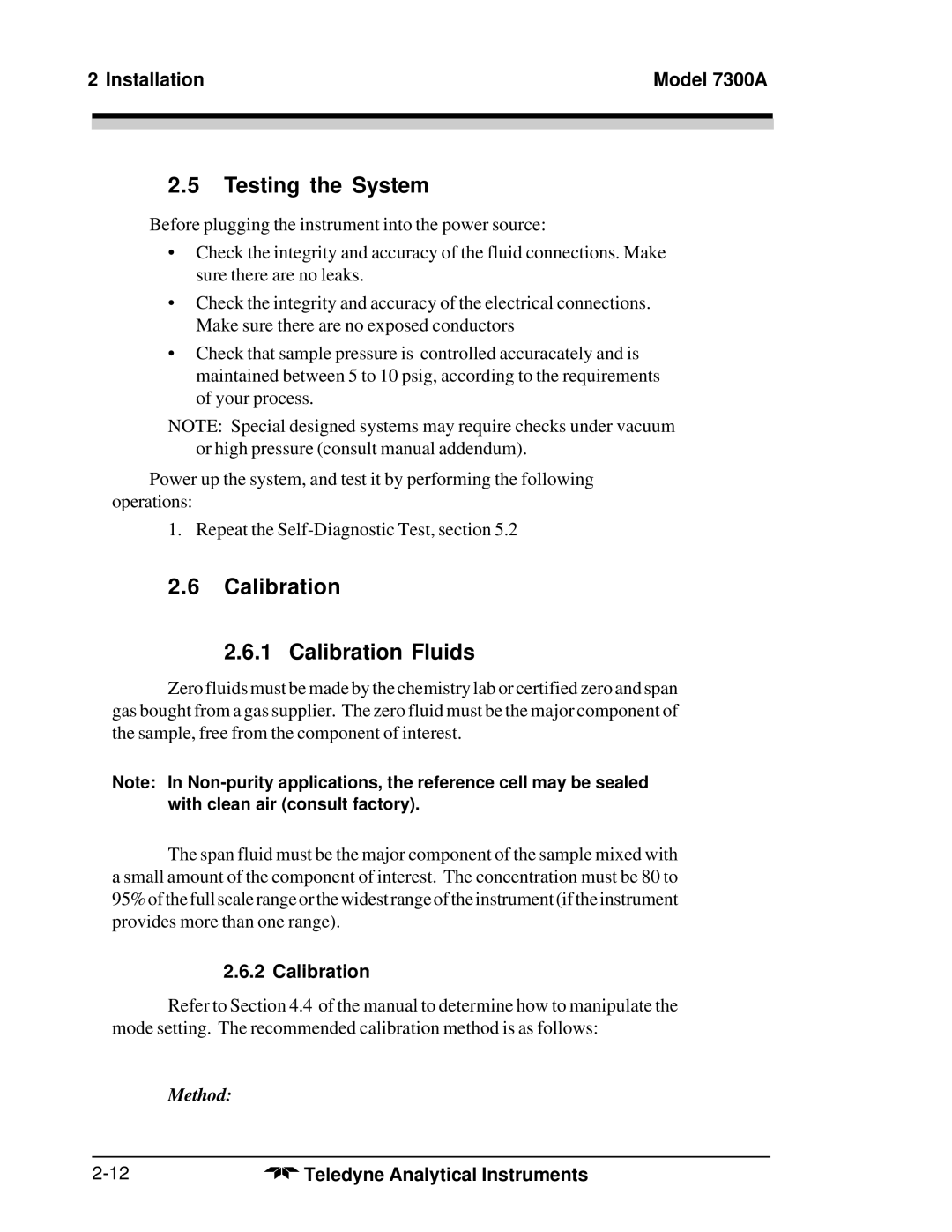2 Installation | Model 7300A | |
|
|
|
|
|
|
|
|
|
2.5Testing the System
Before plugging the instrument into the power source:
•Check the integrity and accuracy of the fluid connections. Make sure there are no leaks.
•Check the integrity and accuracy of the electrical connections. Make sure there are no exposed conductors
•Check that sample pressure is controlled accuracately and is maintained between 5 to 10 psig, according to the requirements of your process.
NOTE: Special designed systems may require checks under vacuum or high pressure (consult manual addendum).
Power up the system, and test it by performing the following operations:
1. Repeat the
2.6Calibration
2.6.1 Calibration Fluids
Zero fluids must be made by the chemistry lab or certified zero and span gas bought from a gas supplier. The zero fluid must be the major component of the sample, free from the component of interest.
Note: In
The span fluid must be the major component of the sample mixed with a small amount of the component of interest. The concentration must be 80 to 95% of the full scale range or the widest range of the instrument (if the instrument provides more than one range).
2.6.2 Calibration
Refer to Section 4.4 of the manual to determine how to manipulate the mode setting. The recommended calibration method is as follows:
Method:
Teledyne Analytical Instruments |
